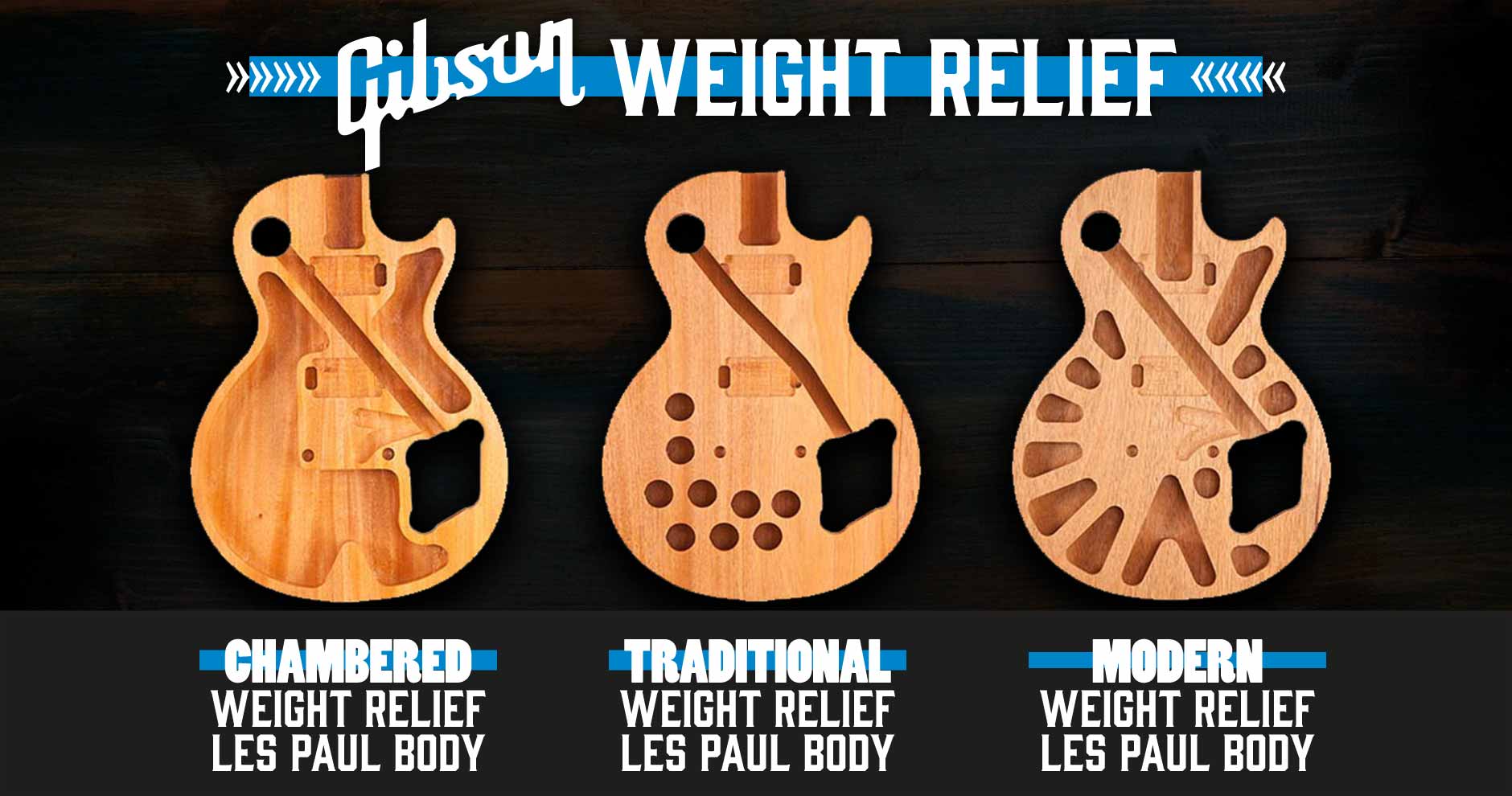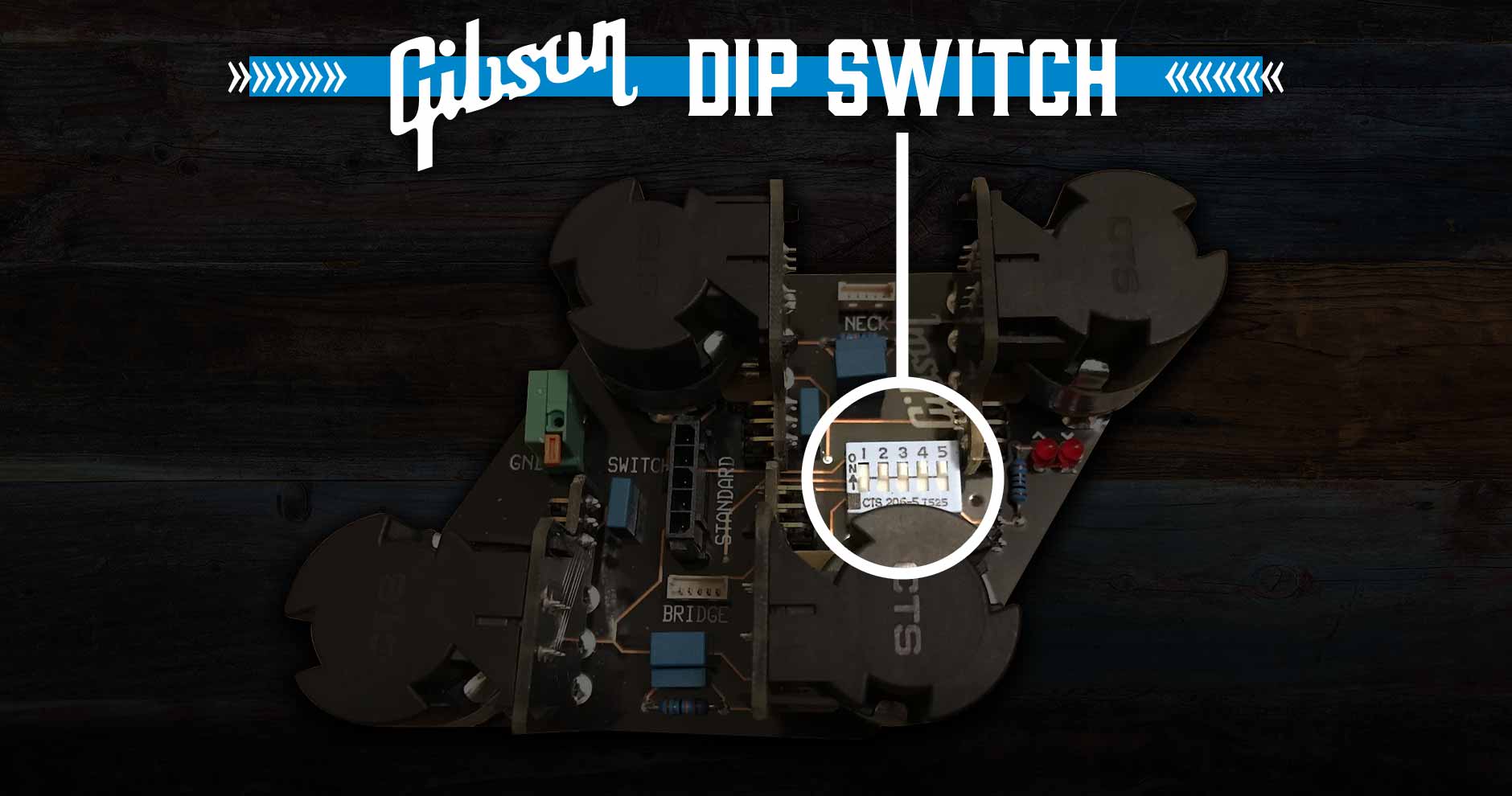How does weight relief affect the Les Paul Modern?
There’s no right or wrong answer when it comes to questioning how weight-relief might affect a guitar’s tone. Yes, it is missing a big chunk of wood, but this newly created space allows it to produce natural resonance like a semi-hollow instrument. Also, keeping the surface wood untouched without letting the sound escape (like on an f-hole) will arguably improve the sustain without sacrificing warm tones.
The pickups are still mounted on a central wooden block, so you’re still getting plenty of resonance from the guitar itself, you just won’t have to worry about back problems when playing for a couple of hours on end! The Gibson Modern incorporates weight relief into their current models and we can only suspect that after years of iterations and experimentation, this is the one they’ve chosen based on strong results.
Here’s a diagram of the different types of weight relief Gibson use for their guitars:

DIP, Split & Tap
The humble Les Paul has been taken to new heights thanks to new switching options and extended control. Did you know that the Les Paul Modern has 5 internal DIP switches that’ll completely modify your tone depending on how they’re used? These are easy to access by simply taking off the back cover plate.
The volume and tone knobs are powerful tools, as each one will change how a pickup responds. These may seem like the simpler options to understand however, even the coil-tap on the neck and bridge pickup can be changed to a coil split instead!
The difference between Coil Tap and Coil Split
Coil Tap: The pickup coils are accessed through a filter which effectively accents a particular frequency for a ‘tuned tap’. The result is a fatter, P90 style sound with balanced output and lower noise and hum than a true single coil pickup.
Coil Split: Isolates one coil in the humbucker pair and changes the humbucker into a single coil. The result is a brighter sounding single coil pickup with lower output than a humbucker.
Below is an image of the 5 DIP switches inside a Les Paul Modern:

The Tone Knobs
Both of the tone knobs have switching options that can be accessed by ‘tapping’ them in a similar way to the volume controls.
Tapping the neck tone control: This will put the pickups out of phase in the middle position giving you that highly sought-after ‘Peter Green’ Les Paul sound.
Tapping the bridge tone control will act as a blowout switch which sends the signal to the jack and bypasses all of the internal guts for a pure, raw tone!
What do the 5 internal DIP switches do?
This is where it does get confusing and the combinations you could choose from are outrageously deep. As long as you know what each DIP switch does, then you can make up your own mind as to what you want your Les Paul Modern to be able to do.
DIP 1 controls your neck pickup.
- DIP 1 off = neck pickup coil tap.
- DIP 1 on = neck pickup coil split.
DIP 2 controls your bridge pickup.
- DIP 2 off = bridge pickup coil tap.
- DIP 2 on = bridge pickup coil split.
DIP 3 is a Neck Volume High Pass Filter. As the volume is turned down on most guitars, the high frequencies are reduced and you end up with a muddy, dark tone. This high pass filter will counter that and allow you to keep the crispness of your tone as you reduce volume with the neck volume pot.
- DIP 3 on = out of circuit.
- DIP 3 off = in circuit
DIP 4 is a Bridge Volume High Pass Filter. This is the same principle as DIP 3 except it’s applied to your bridge pickup instead.
- DIP 4 on = out of circuit.
- DIP 4 off = in circuit
DIP 5 is a Transient Suppression switch. Or in other words, a compressor built into your guitar! This will block harsh transients or tones (like pick attack or noise) from destroying your guitar sound! This is especially good when used with any sort of digital equipment (like recording into a DAW like Pro Tools or Logic) because you’ll ensure that you don’t cause a spike and ruin a recording take.
It’s also worth noting that the compression is really transparent so you won’t have to worry about colouring your sound.
- DIP 5 on = out of circuit.
- DIP 5 off = in circuit
Conclusion
There’s no denying that options are there that make this an incredibly versatile instrument. The key is to know what you want to get out of it and then adjusting those DIP switches to get those tones!
You could have a Les Paul that has fat P90 tones in the neck with outrageous overblown bridge humbucking tones that never lose any top-end OR a Les Paul that is both balanced and simple.
Whether you’re into recording or playing live, there’s a case for the LP Modern being the most versatile Gibson around. Can you think of any others that might take that crown instead?
If you enjoyed this read, check out more of our Learn articles.
Shop for Les Paul guitars by clicking here!





Responses & Questions
One response to “Is The Les Paul Modern The Most Versatile Gibson?”
You explain weight relief, but don’t say which the Les Paul Standard uses.